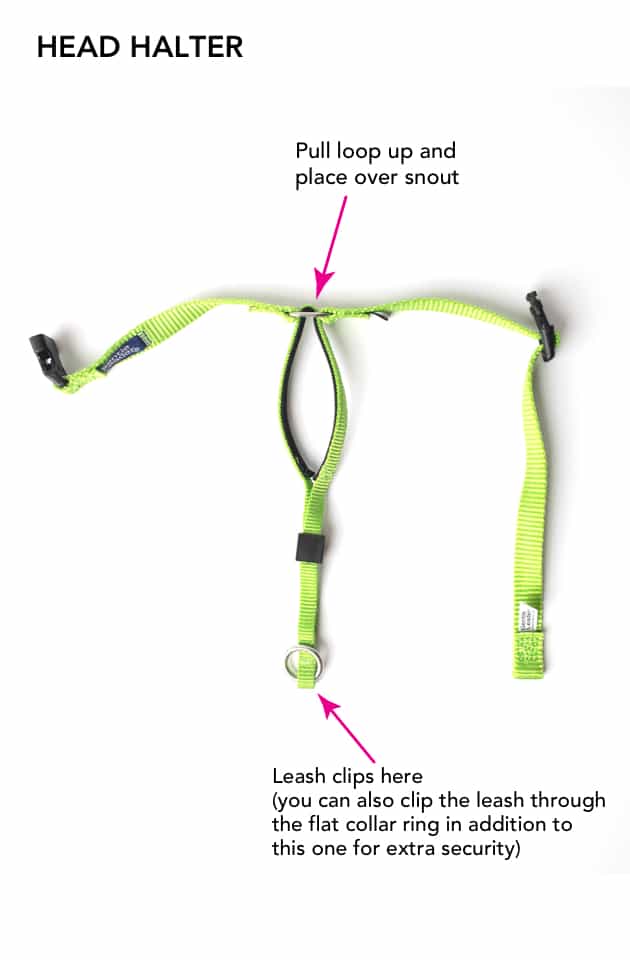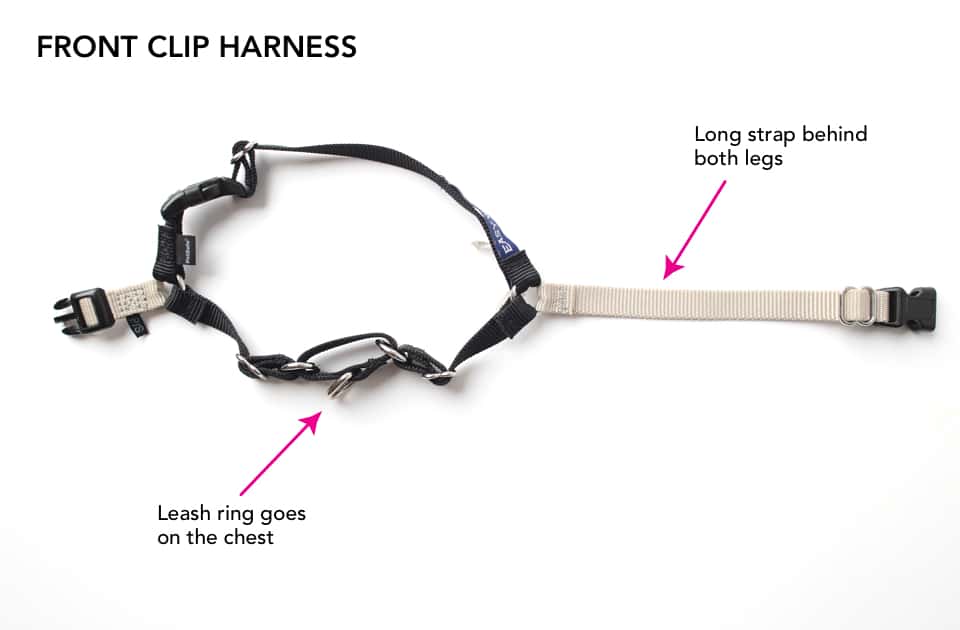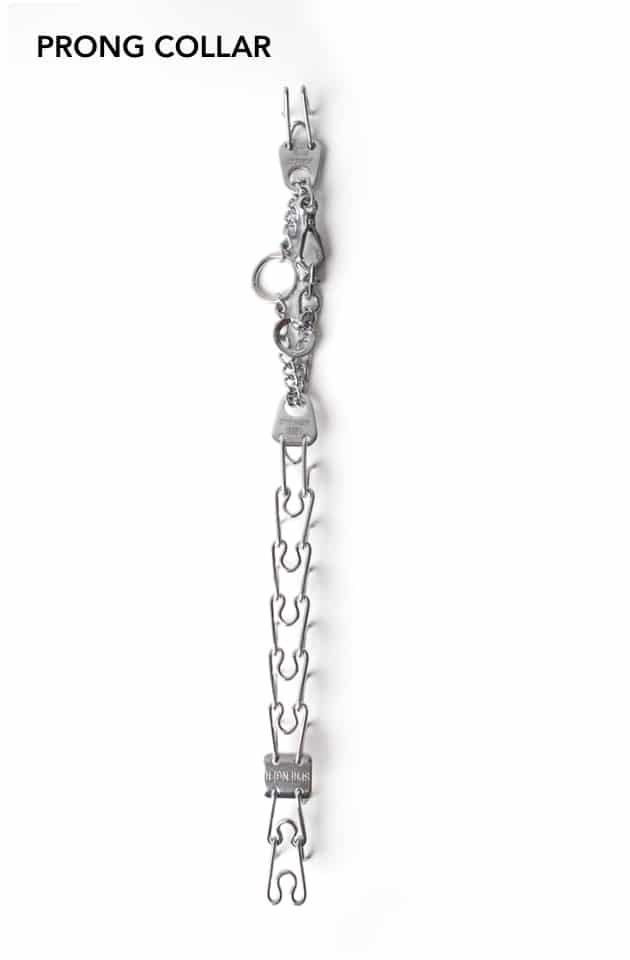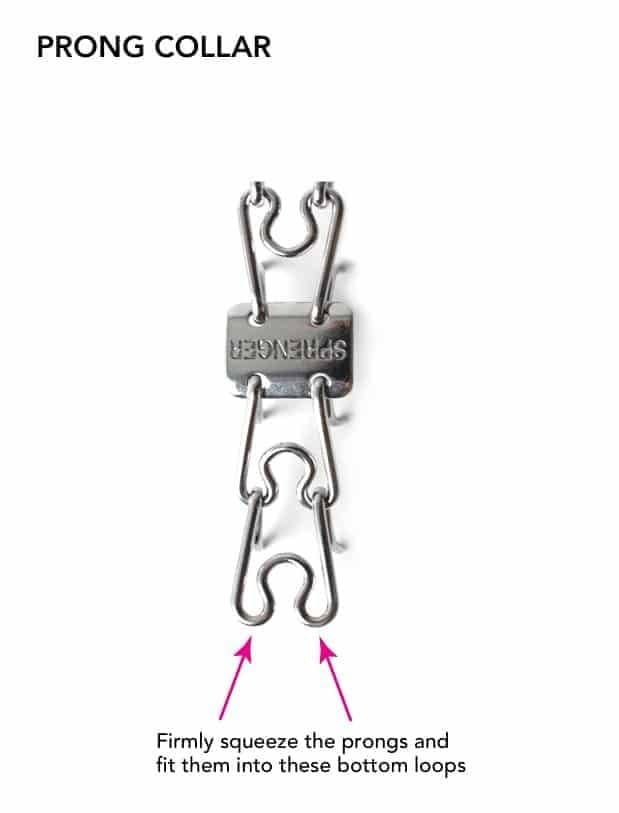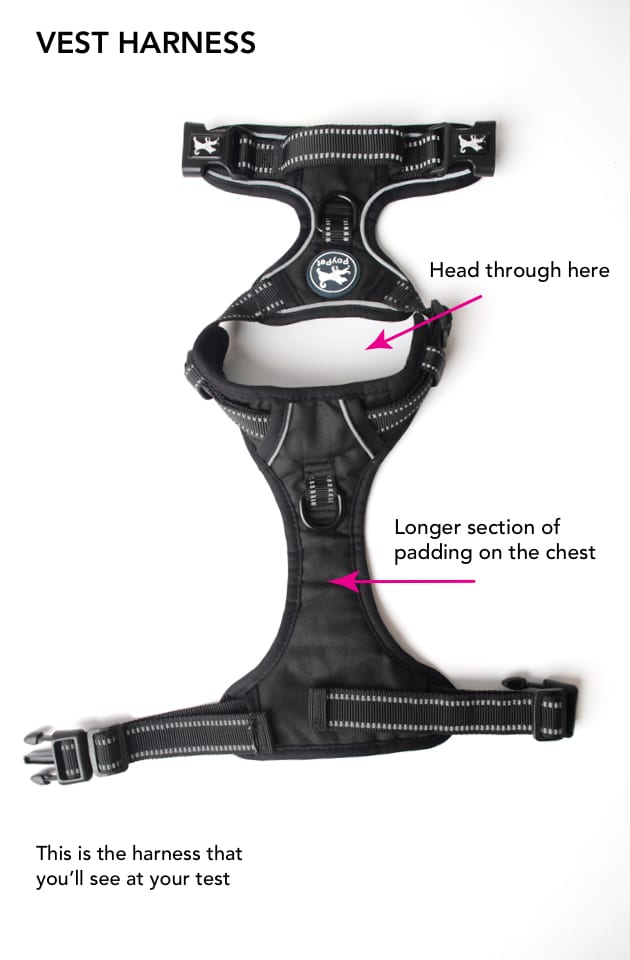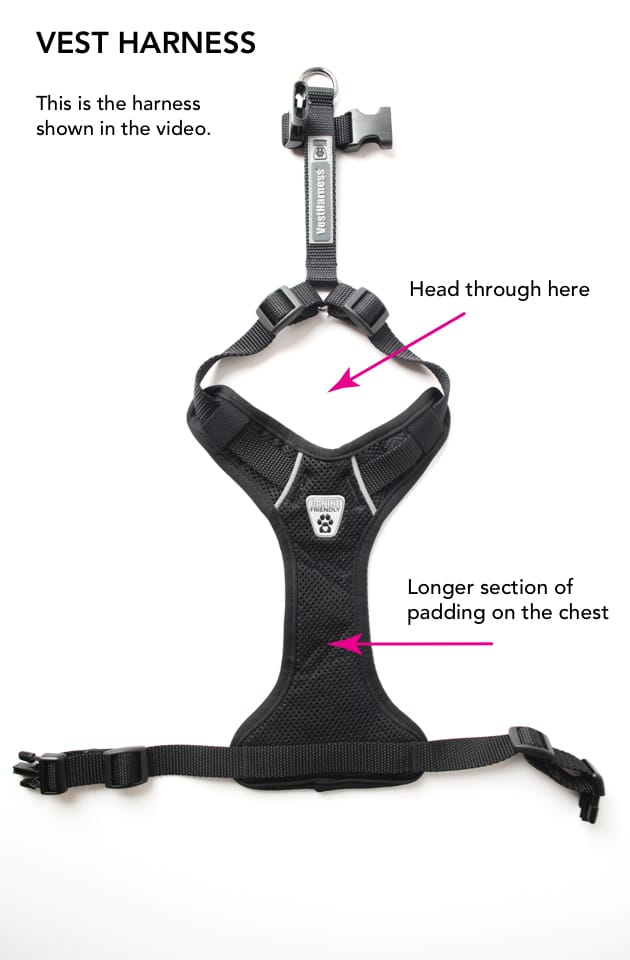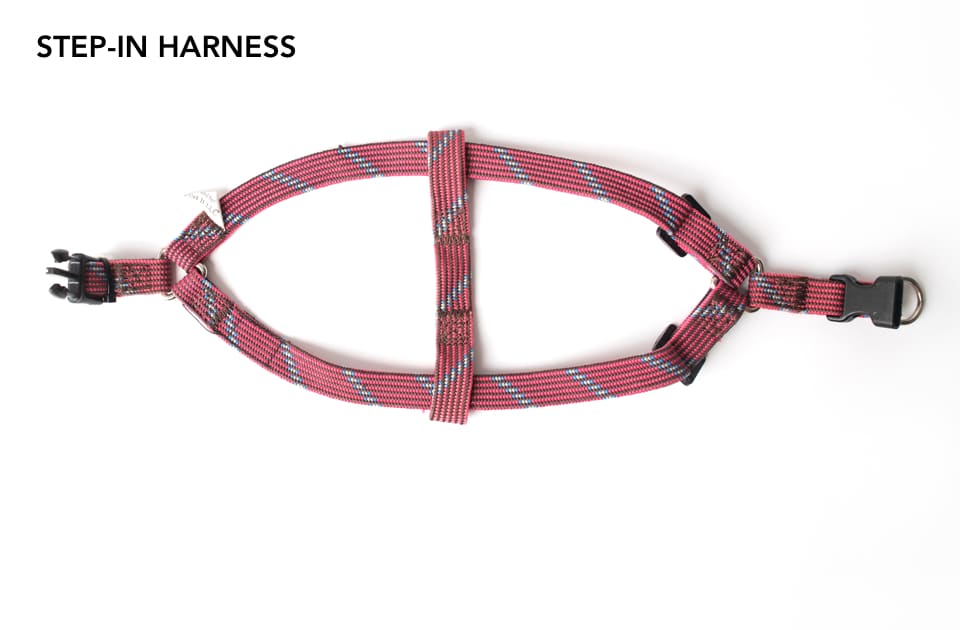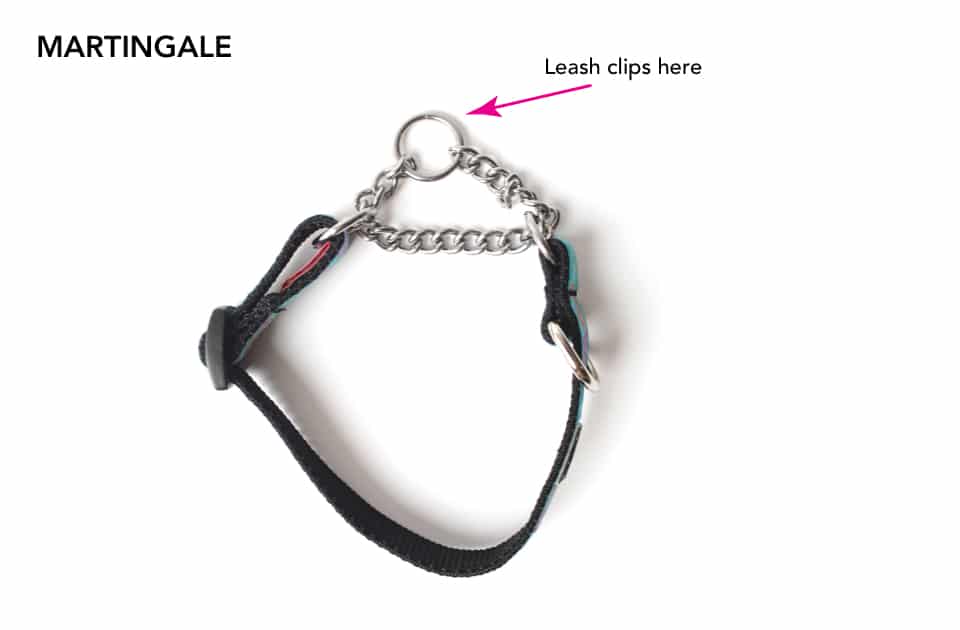Congratulations on making it to the in-person harness test! In addition to re-watching the training videos, we recommend reading over these helpful guidelines for how to properly secure the most common collars and harnesses.
In particular, potential walkers fail the head halter, front clip, and prong collars the most often, so it’s especially important to pay attention to the “What to watch out for” portion in these tutorials.
Because this is a test, the Harness Test Administrator will not be able to answer questions about the collar/harnesses, so if you need extra guidance, we recommend visiting your local friendly pet store to ask a sales associate.
How to Put On a Head Halter
The head halter is less complex than it first appears. It works like a regular flat collar but with a large loop that fits over the dog’s muzzle and fastens securely under the chin.
- Pull the loop up through the center ring (some brands have extra padding in the part of the loop that fits over the dog’s muzzle).
- Fit loop around their snout. The metal ring should be all the way down at the bottom of this loop.
- As for the black clasp under the dog’s chin, most manufacturers recommend the owner keep this portion of the harness fitted. If it is already set, there should be no need to undo it.
- Fasten the long strap around their neck, just like a regular flat collar. This should fasten in the back.
- At your test, you’ll be asked where to secure the leash on this harness. Clip the leash through the silver ring at the end of the strap under their snout.
- If the dog is wearing a flat collar as well, you can also fasten the leash through the ring on the harness as well as the ring on the collar for an extra safety precaution.
Rover tip: Be sure to pull the snout loop up through the center ring first, otherwise you won’t be able to secure the harness correctly.
How to Put On a Front Clip Harness
- Slip the opening of the harness over their neck.
- Adjust it so connector rings sit above and behind the dog’s shoulder, and the D-ring is positioned in the center of the chest
- Pull the long strap under their belly behind their front legs and clip shut. If you’re tested on the Easy Walk brand of front-clip at your test, this will be the colored strap. Note: Different brands color the harnesses differently, so if you’re using a brand besides the Easy Walk, you’ll want to make sure that the leash clip is on the chest and the long strap is fastened under the belly behind the front legs.
- Make sure that the harness is not inside-out and that all labels are facing outwards
- At your test, you’ll be asked where to secure the leash on this harness. Fasten the leash to the D-ring on the front of the dog’s chest. Some brands may have two attachment rings, one in the front and one in the back. Default to the front unless the owner states otherwise.
Rover tip: Make sure the long strap is fastened underneath their belly behind both front legs—not in between their legs.
How to Put On a Prong Collar
- Position collar around the dog’s neck with the opening in the back and prongs facing inwards.
- Make sure the chain near the leash fastening isn’t tangled or twisted.
- Firmly squeeze the prongs and fit them into the open loops—the prongs will not fit into the loops unless you do so.
- Be sure to squeeze the prongs into the loops by inserting them from above. ALL prongs should face inward against the dog’s neck.
- At your test, you’ll be asked where to secure the leash on this collar. The leash must be attached to the D-shaped ring on the chain in the back. The large round ring should lie flat against the back of the dog’s neck.
- Once fastened, the collar should be positioned high up on the back of the neck behind the ears unless otherwise indicated by the owner’s instructions.
- Be sure to remove the prong collar after the walk is over to prevent injuries.
- To remove the prong collar, simply squeeze the prongs and pull them out of the open loops.
Rover tip: It can be easy to miss, but don’t forget to squeeze the prongs together while you fit them into the loops. If you don’t squeeze them, they’ll be too far apart to fit in.
How to Put on a Vest Harness
- Slip the harness loop over the dog’s head so that the vest section of the harness is resting on the dog’s chest. The D-ring is now located on the dog’s back.
- Pull the rest of the vest between his front legs and clip in the straps on both sides. For some brands, there will only be a clip on one of the straps.
- At your test, you’ll be asked where to secure the leash on this harness. Clip the leash to the D-ring on the dog’s back.
Rover tip: There are many different styles of vest harnesses, including those that have padding on the chest and back. At your harness test, be sure to put the longer section of padding on their chest, and the shorter section on their back.
How to Put On a Step-In Harness
- Lay the harness down in front of the dog’s front paws, making sure no straps are twisted.
- Place one front paw into each opening.
- Pull the harness up so it fits securely around the dog’s chest and shoulders, and clip the harness on the center of their back.
- At your test, you’ll be asked where to secure the leash on this harness. The leash clips through both rings on the dog’s back.
- These rings should be positioned above the clip, not beneath it.
How to Put On a Martingale Harness
While you may or may not be tested on the martingale collar at your test, it’s always a good idea to be familiar with a wide variety of collar and harness types.
- Spread the collar wide and slip it over the dog’s head.
- There are no opening latches on the martingale. If it’s the appropriate size, it should be able to easily slide over the dog’s head.
- At your test, you’ll be asked where to secure the leash on this collar. Clip leash to the ring on the adjustable portion of the collar. For some brands, the adjustable area is on a chain; for others, it’s on a fabric loop.
